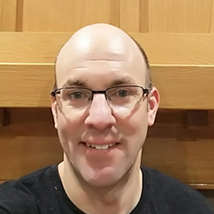In ‘water-short’ basins and agricultural centers, many Pacific Northwest water managers – e.g., counties, PUDs, irrigation districts, cities -- wrestle with how to accurately measure water used to meet a range of development, agricultural, and habitat goals. In Washington State, the $300M 2018 Streamflow Restoration Act was the trigger that changed how cities, counties and others track rural water use, pushing water managers to ‘account’ for water in rural building projects and water that can be saved for fish and streams. Aspect developed Riverbank, a cloud-based water accounting application, to make it easier to manage, evaluate, and keep track of the water balance sheet.
Spreadsheets Aren’t Adequate for Managing Critical Water Use Data
“Riverbank provides the transparency and reliability to radically cut the time water managers take to do water accounting math and reporting”
The ‘old’ tools like Excel are ill-equipped to deal with accounting complexities such as managing different mitigation sources across drainage basins (e.g., trust water rights), and variable accounting rules/logic (e.g., consumptive use). Add to that the inherent risk of tracking mission-critical data inside a spreadsheet, and this can be a frustrating, expensive, and precarious process for a water manager trying to meet water management guidelines and business needs.
Enter Riverbank—A cloud-based application for managing the water balance sheet
The Riverbank application is a web-based accounting system that is wired into other workflows (like permitting processes and GIS) to meet the myriad reporting and planning needs that water managers have. It's tooled to the very specific conditions of water accounting at a basin-scale and developed to support the "living ledger" requirements that allow agencies to keep track of and report out on where they stand relative to resource/growth management requirements.
Riverbank provides an easy-to-use and share summary of water use accounting across subbasins and water reserves.
Water Banking and ‘Mitigation’ is the Future
Most PNW basins are over-appropriated during the summer when demand for water continues to expand and ‘mitigation’ is here to stay. Water banking (using water stored or held in trust to mitigate for new demand) is likely the future for public agencies needing to serve additional customers (counties, PUDs, irrigation districts, cities) and for private developers wishing to build new properties. However, mitigation only works if it is tracked and reported.
Visualizing Rural Water Use in Chelan and Okanagan Counties
Riverbank provides the transparency and reliability to radically cut the time water managers take to do water accounting math and reporting. Chelan County and Okanagan County currently use Riverbank to meet permit-exempt well tracking responsibilities required by the Washington State Department of Ecology.
With Riverbank, thousands of parcels served by permit-exempt wells are tracked and visualized -- including details on associated building permits, irrigation water supplies, additional dwelling units, and more. GIS technology in Riverbank allows the system to automatically assign basin-specific accounting rules and water use assumptions to each parcel.
Contact Senior Data Scientist Blair Deaver or Associate Data Scientist Parker Wittman to learn more about how Riverbank can help you.








